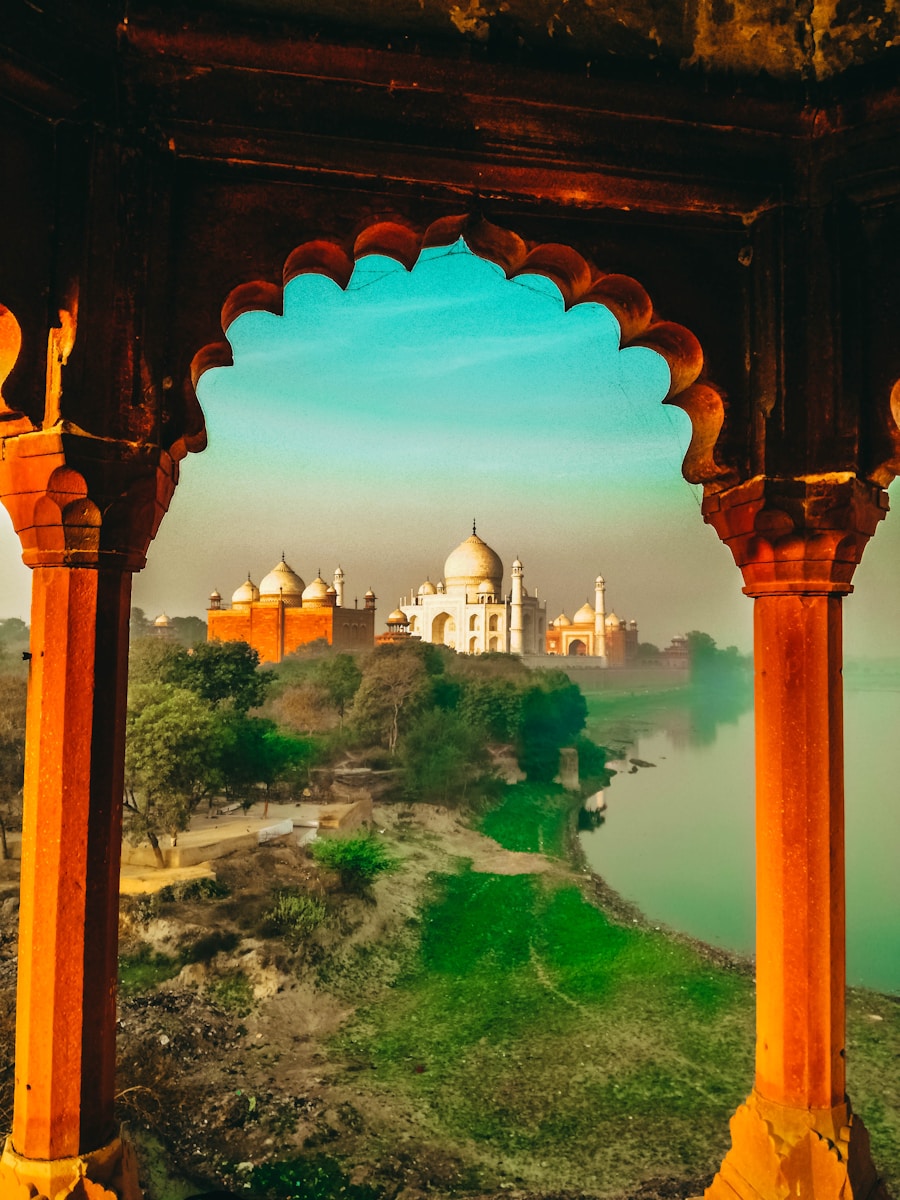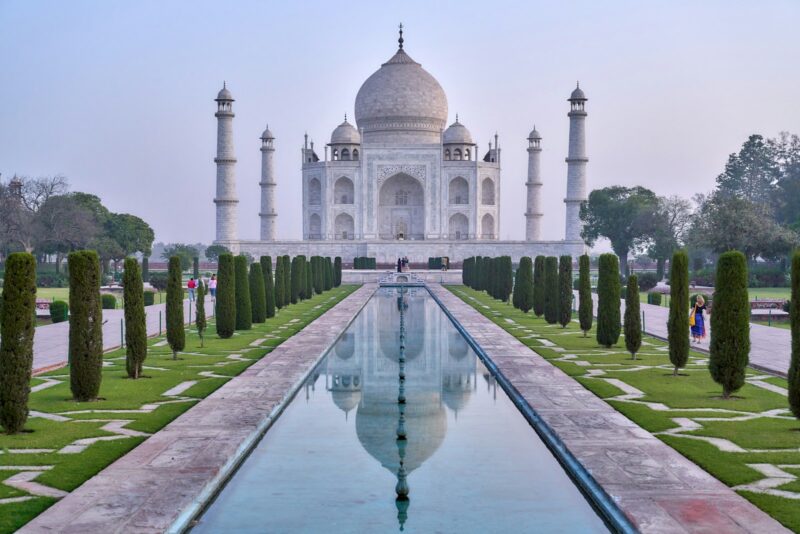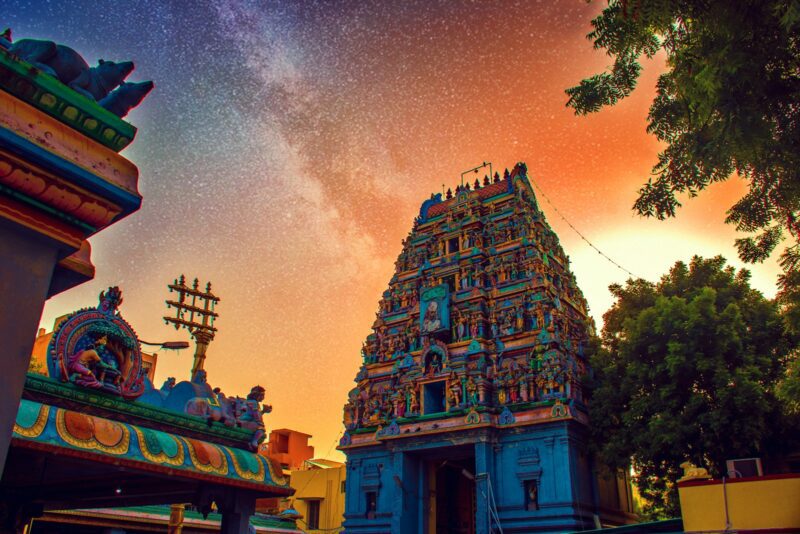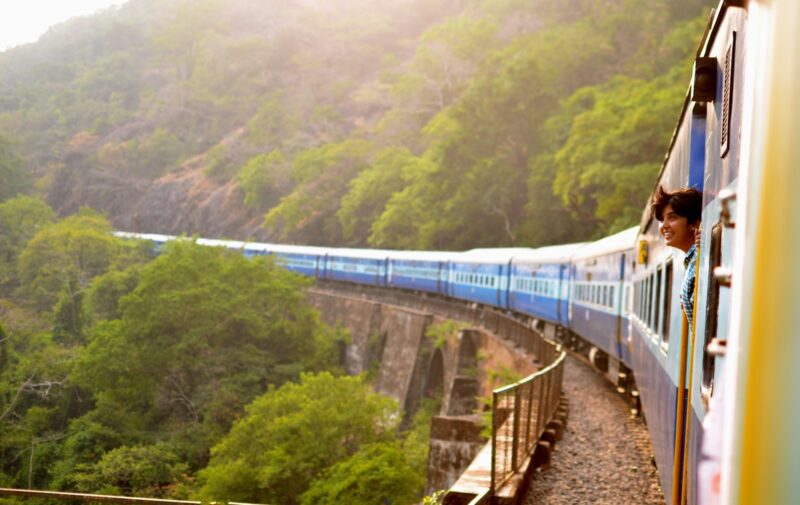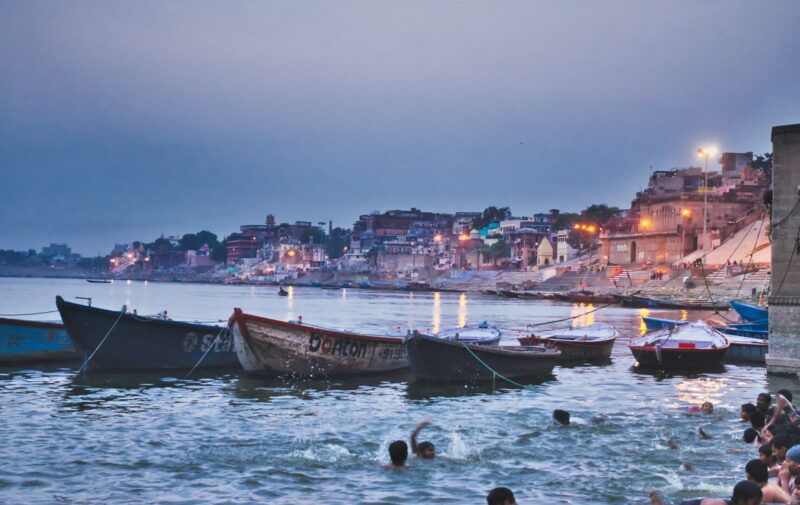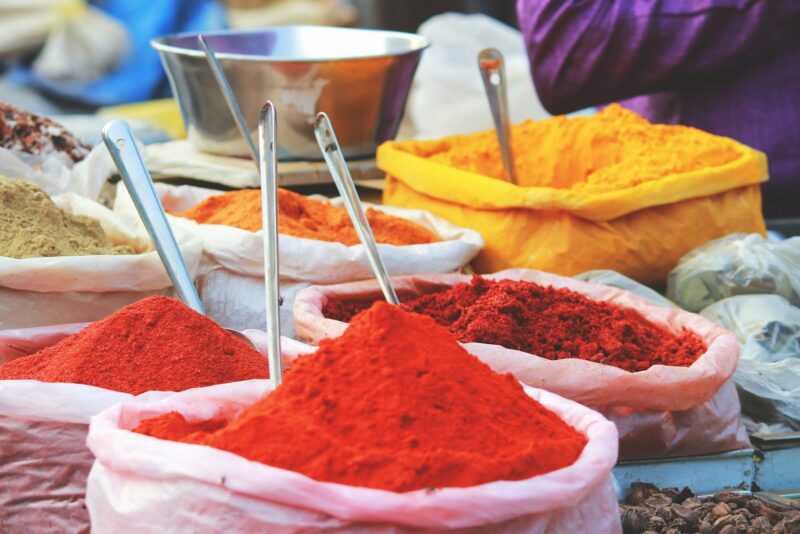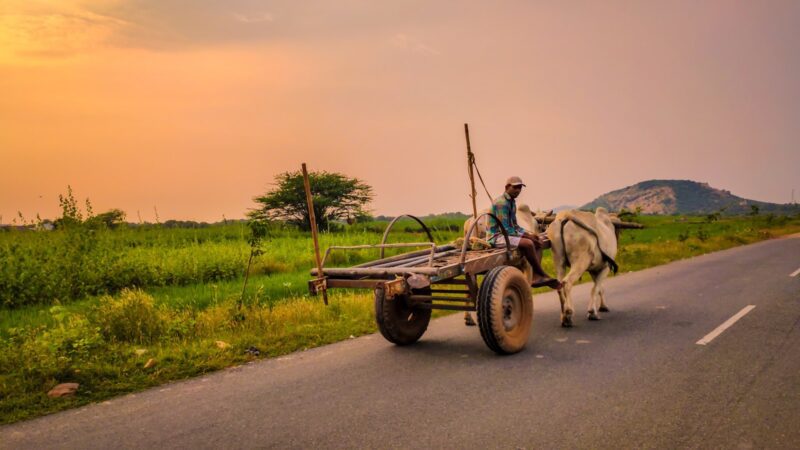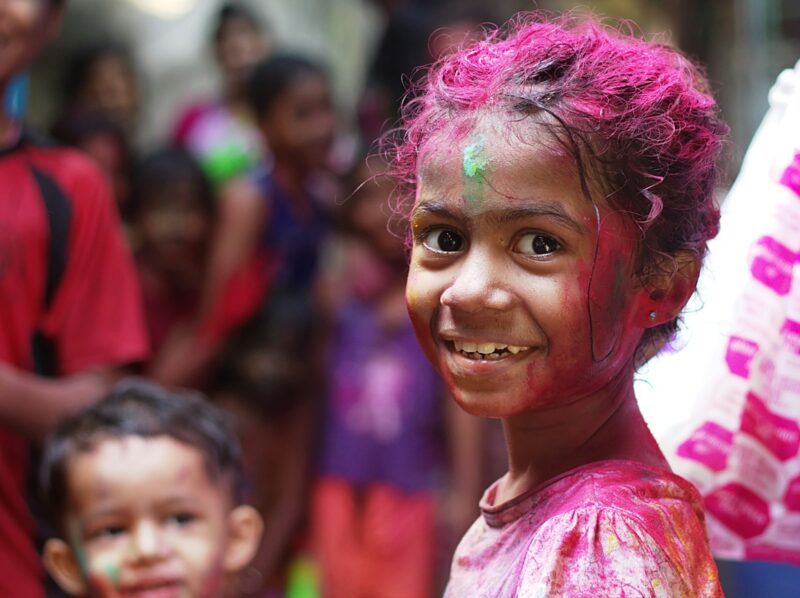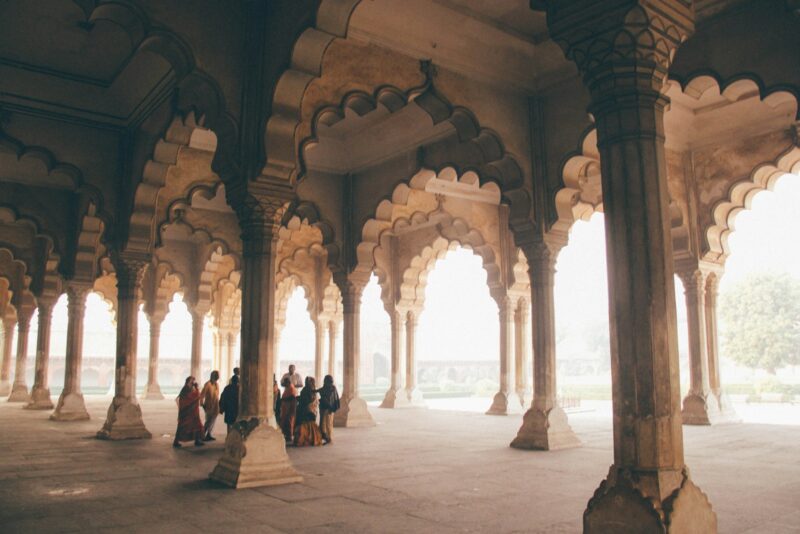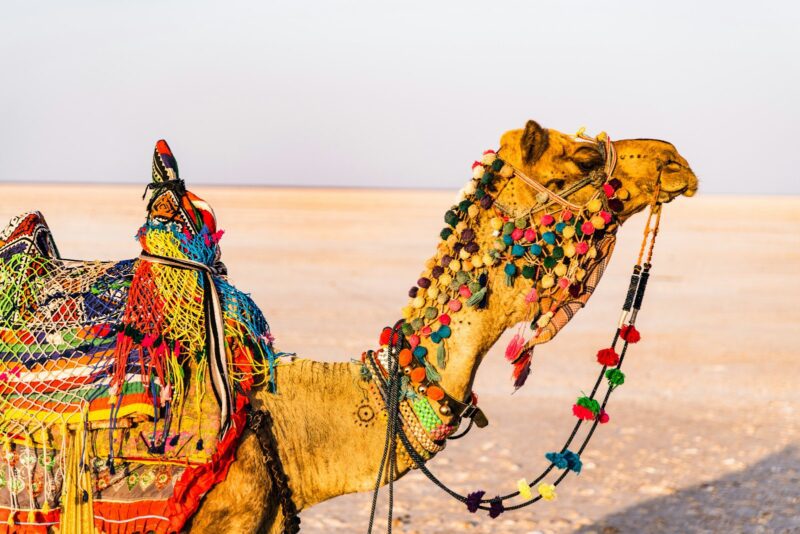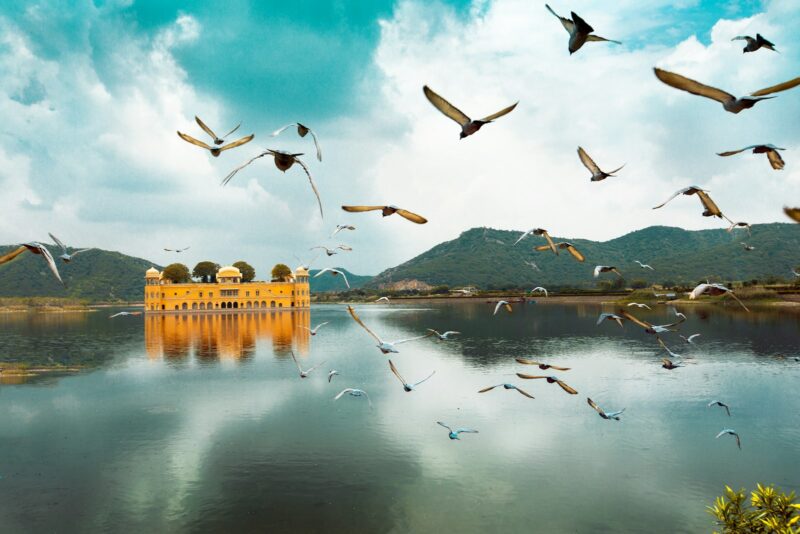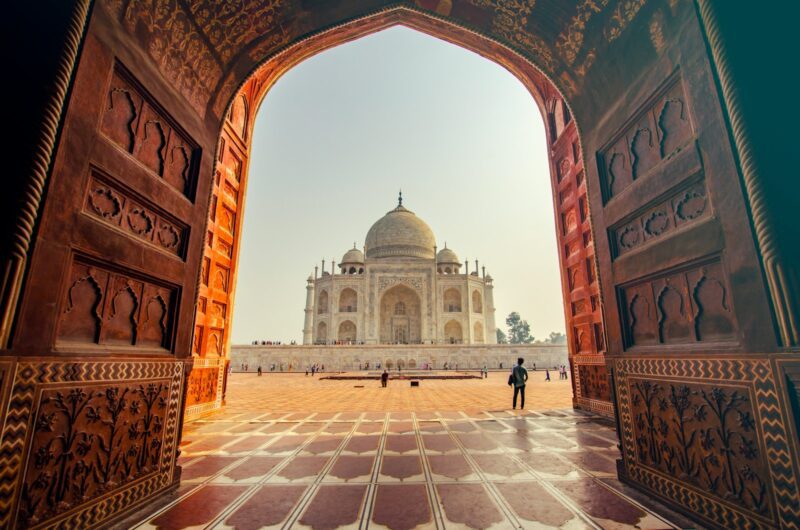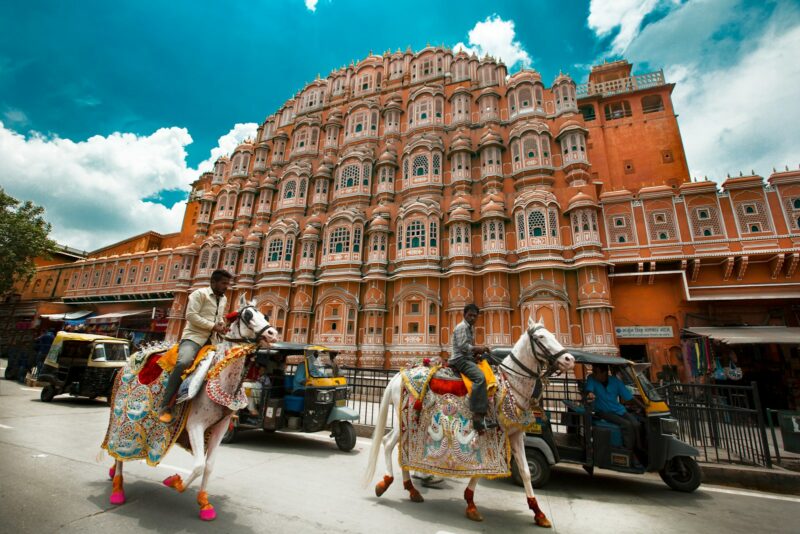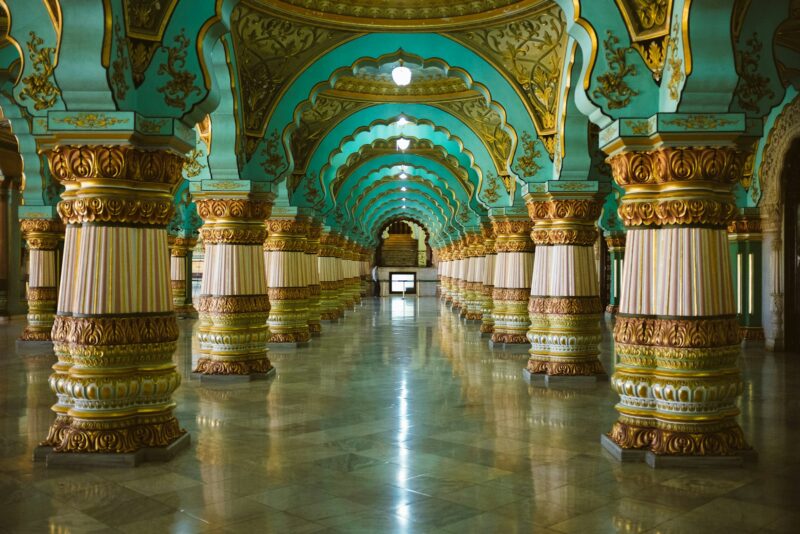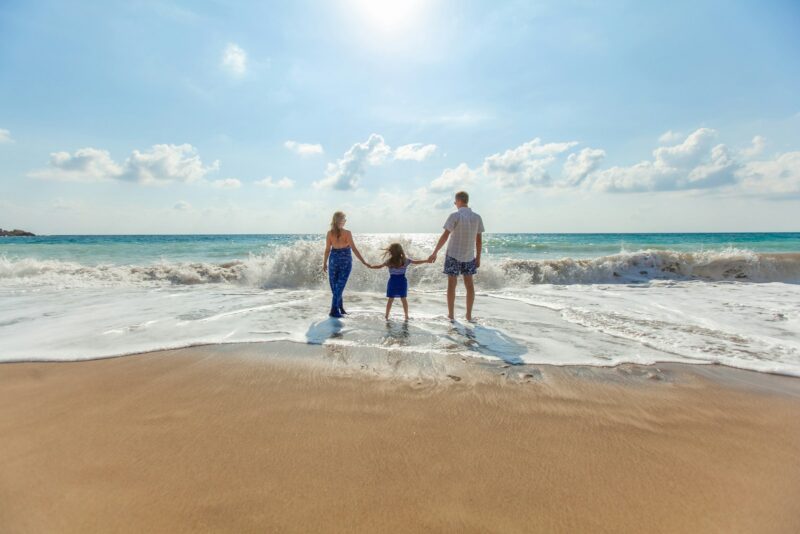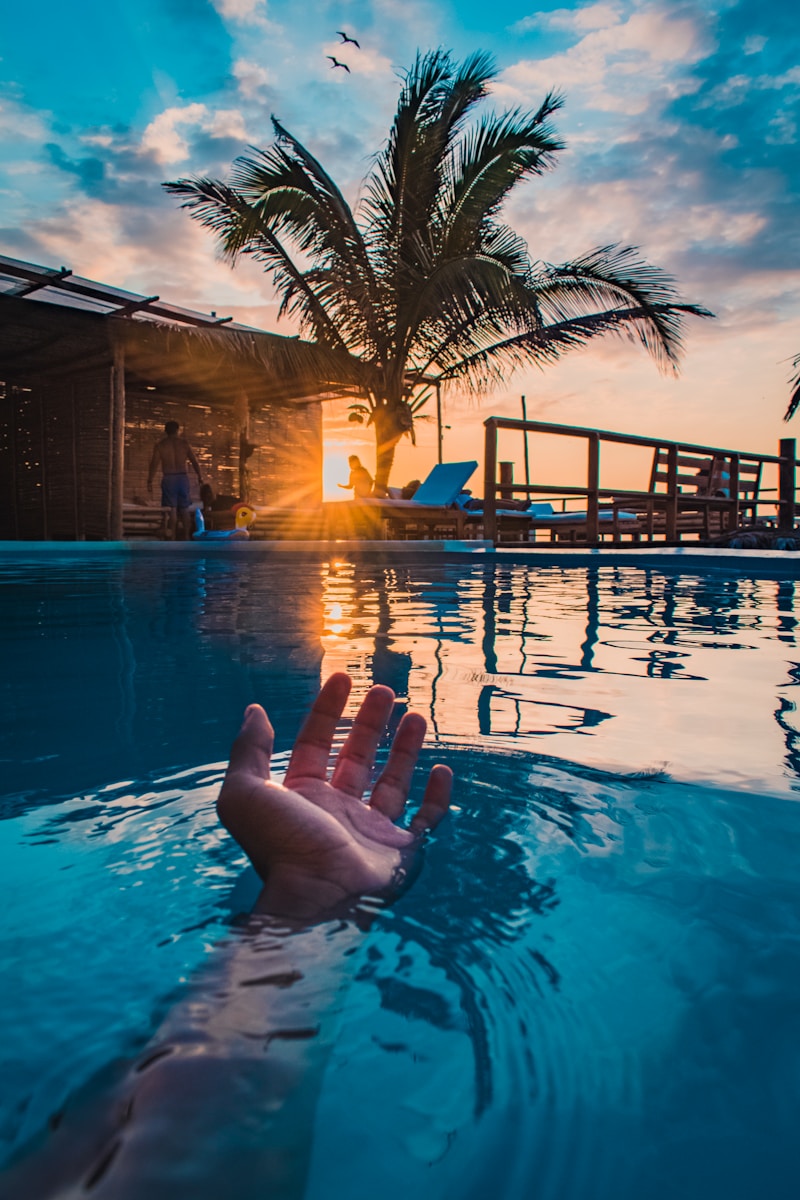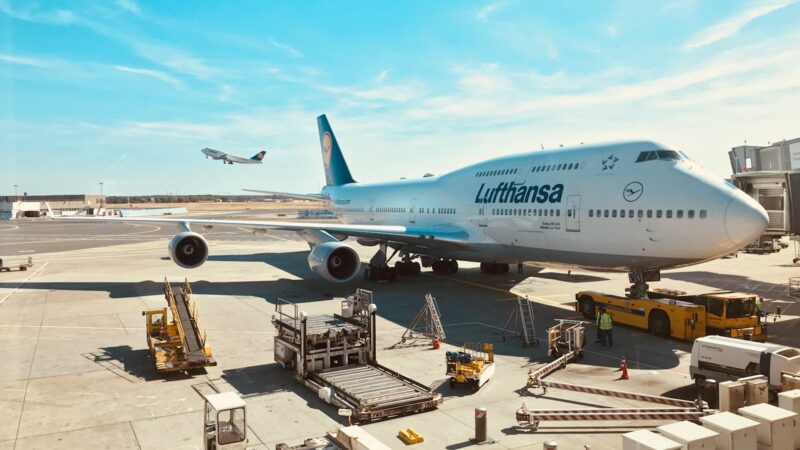Table of Contents
ToggleTravel Safety Tips for India: Overview
India is a tapestry of vivid colors, fascinating cultures, and diverse landscapes, drawing travelers from around the world. As with any journey, understanding how to navigate a new country safely is paramount. Whether you’re visiting the majestic Taj Mahal, the serene backwaters of Kerala, or the bustling streets of Mumbai, having safety tips at your disposal can enhance your experience. Preparing for your trip involves research, from knowing what to pack to being aware of local customs and social norms.
Traveling through India requires attentiveness and respect for the region’s cultural differences. Adhering to local traditions, such as removing shoes before entering homes and temples, is as essential as safeguarding your health through cautious dietary choices. A good practice is to consume thoroughly cooked meals and bottled water with an intact seal to avoid waterborne illnesses. Equally important is staying vigilant about personal belongings, especially in crowded areas, and taking precautions against varying weather conditions during outdoor adventures.
Travel Safety Tips for India: Key Takeaways
- Safety preparation enhances the travel experience.
- Respect for cultural norms is crucial.
- Vigilance with health and belongings is necessary.
Travel Safety Tips for India
Travel Safety Tips for India: Planning Your Trip to India
When planning a trip to India, travelers should focus on understanding the region’s varied culture, picking the ideal time for their visit, ensuring their stay and transport are secure, taking necessary health precautions, and registering with their embassy.
Understanding Local Culture and Customs
India’s rich tapestry of culture and customs varies greatly from region to region; it’s imperative for travelers to familiarize themselves with local traditions and social norms. Respectful engagement with local customs includes appropriate dress and conduct in sacred places, and being mindful of gestures or behaviors that could be inadvertently offensive.
Choosing the Right Time to Visit
India experiences diverse weather patterns, including a significant monsoon season. Travelers should plan their visit according to the region they wish to explore—north, south, east, or west—keeping in mind that the climates range from tropical in the south to temperate in the north. Peak tourist season generally lies between October and March when the weather is more favorable across most of the country.
Securing Accommodations and Transportation
It is wise for travelers to book their accommodations and transportation well in advance. India offers a range of options from budget hostels to luxury hotels. For transportation, a mix of trains, buses, and domestic flights connect various parts of the country. Confirming reservations in advance can alleviate travel stress and help to secure better rates.
Health Precautions and Vaccinations
Before traveling to India, individuals should consult with a healthcare professional to determine necessary vaccinations and health precautions. Common recommendations include shots for hepatitis A and B, typhoid, and routine vaccinations. Additionally, precautions should be taken against mosquito-borne diseases like malaria and dengue fever.
Registering With Your Embassy
For added security and ease of communication, travelers to India are advised to enroll in the Smart Traveler Enrollment Program (STEP) offered by the Department of State. This free service enables the local embassy to contact travelers in case of an emergency and provides updates on safety information for the region they are visiting.
Travel Safety Tips for India: Staying Safe in Transit
When traveling in India, one’s safety during transit is paramount. Navigating airports and train stations, using public transportation, and hiring taxis or rickshaws each come with their own set of challenges and precautions.
Travel Safety Tips for India: Navigating Airports and Train Stations
Airports and train stations are bustling centers of activity, which can often be overwhelming. Travelers should remain vigilant at all times and keep their belongings secure. It is advisable to:
- Pre-book transport from the airport or station to avoid touts.
- Keep a close eye on luggage, as crowded places are common
Travel Safety Tips for India: Accommodation Safety
When traveling in India, where one stays can significantly impact their safety and overall experience. The choice of accommodation, awareness of security measures, and knowledge of potential scams all play a crucial role in ensuring a safe and enjoyable trip.
Travel Safety Tips for India: Choosing Hotels and Guesthouses
Location: Choose accommodations in reputable areas, and consider proximity to police stations or other security facilities.
- Reviews: Read current reviews from previous travelers to gauge safety and cleanliness.
- Amenities: Ensure hotels have adequate safety measures like 24/7 front desk service and secured entry.
Travel Safety Tips for India: Room Safety and Security Measures
Locks: Verify that rooms have sturdy locks on doors and windows. A safety latch or deadbolt can provide an extra layer of security.
- Safe: Use the hotel safe to secure valuables such as passports and electronics.
- Personal Awareness: Always be mindful of who has access to the room and maintain personal security.
Travel Safety Tips for India: Avoiding Common Lodging Scams
Upfront Payments: Be cautious with hotels requiring large deposits or full payments in advance.
- False Representatives: Look out for individuals falsely claiming to be hotel staff as a part of a scam.
- Trusted Networks: When possible, book through well-known platforms or travel agencies that offer support in case of disputes.
Travel Safety Tips for India: Health and Wellness
When traveling to India, it’s essential to consider one’s health and wellness. Attention to the climate, food safety, insect-borne diseases, and healthcare options is key for a safe and healthy visit.
Dealing with India’s Climate
India’s climate can vary dramatically from the snowy peaks of the Himalayas to the arid Thar Desert. Dehydration can be a concern in the hotter regions. Travelers should carry reusable water bottles and consume only sealed bottled water or properly purified water. During the monsoon season, humidity soars, making it crucial to stay hydrated
Travel Safety Tips for India: Cultural Etiquette and Social Norms
Traveling in India requires a sensitive approach to its rich and diverse cultural tapestry. Key to a safe and respectful visit is understanding how to dress, act, and communicate in a way that aligns with local customs and social expectations.
Dressing Appropriately for the Setting
Female Travelers: Women should dress modestly, especially when visiting religious sites. Clothing that covers the legs and shoulders, such as long skirts or trousers and shawls, is advised. In more conservative areas, adopting local attire, like a salwar kameez, can foster a sense of respect and trust.
Male Travelers: Men are encouraged to wear long pants and avoid sleeveless tops. The choice to dress conservatively can reflect a deeper understanding and appreciation of the local culture, paving the way for smoother interactions.
Understanding Religious and Social Practices
India is home to a myriad of religious beliefs and practices. Sensitivity to these is crucial:
- Always remove shoes before entering a place of worship.
- In Sikh gurudwaras, head coverings are mandatory; this applies to both men and women.
- Hindu temples often require visitors to not carry leather items as a sign of respect.
Acknowledge and respect local practices to maintain a harmonious relationship with host communities.
Interacting with Locals
When greeting, a simple “Namaste” with palms pressed together is a universally accepted and respectful gesture. It’s advisable for Westerners to be mindful of the personal space and physical contact norms; generally, it’s best to wait for the other person to initiate a handshake or gesture.
In conversations, remain neutral and avoid sensitive topics such as politics and religion. Displaying a genuine interest in the culture and traditions can enrich interactions and build meaningful connections with the local people.
Travel Safety Tips for India: Personal Safety Tips
When traveling to India, personal safety should be a top priority. This section offers practical advice on how to protect your valuables, maintain awareness, handle petty theft, and navigate the country safely, especially for those journeying alone.
Keeping Valuables Secure
It is essential to safeguard your possessions, particularly in tourist-heavy areas. Use a sturdy, slash-proof bag or purse to carry your essentials. Opt for bags with lockable zippers and wear them across your body to deter thieves. Consider utilizing hotel safes or security pouches worn under clothing for important documents and items.
Awareness of Surroundings
Maintaining a high level of awareness is critical, especially in crowded places where pickpocketing can be common. Stay alert and be cautious of common street scams. Trust your instincts; if an area feels unsafe, leave promptly. Avoid demonstrations or large gatherings, which can escalate unexpectedly.
Handling Petty Theft and Pickpocketing
To mitigate the risk of petty theft, be discreet with cash and avoid showing off expensive gadgets in public. If you fall victim to a pickpocket, inform the local authorities immediately. Remember, most thefts occur due to opportunity; therefore, present less of an opportunity to potential thieves.
Travel Safety Tips for India: Travel Safely as a Solo Adventurer
For those embarking on solo travel, it’s important to use trustworthy transportation services, especially at night. Solo female travelers should be particularly cautious of unwanted attention or harassment and might consider dressing conservatively to blend in. Carrying a DEET-based repellent can also dissuade not only pests but potential thieves who may be averse to its strong smell.
By following these safety tips and exercising caution, travelers can significantly reduce their risk and ensure a safer and more enjoyable visit to India.
Travel Safety Tips for India: Navigating Sensitive Areas
When traveling to India, it’s essential to be aware of sensitive areas that may pose risks, such as regions with a history of conflict or civil unrest. Understanding the local context and knowing which zones to approach with caution can significantly increase safety.
Travel Safety Tips for India: Traveling in Conflict Zones
Conflict zones, particularly regions like Kashmir and the Northeastern states, have seen periods of tension and violence. It is critical for travelers to stay up-to-date with travel advisories and local news. Jammu and Kashmir, for instance, have been subject to long-standing disputes and occasional terrorist attacks, making it a region where heightened caution is necessary. Travelers are advised to always comply with government officials and respect any curfews or restrictions placed on movement.
Travel Safety Tips for India: Understanding Regional Safety Variance
India’s vastness comes with diverse safety landscapes. Places like Rajasthan and Maharashtra are typically safer for tourists, but incidents of violent crime and sexual assault have been reported, stressing the need for vigilance. Terrorist elements, including Maoist extremist groups like the Naxalites, can particularly affect states such as Chhattisgarh and Telangana. Travelers are urged to respect regional differences and the nuanced safety concerns therein, always keeping emergency services contact information at hand. In areas of civil unrest or where ethnic insurgent groups operate, it’s vital to monitor any tensions that could impact travel plans.
Travel Safety Tips for India: Festivals and Public Gatherings
Traveling to India during festivals can offer a vibrant glimpse into local culture, but it’s important to prioritize safety in the bustling environments of New Delhi, Goa, Jaipur, and other locations.
Celebrating Safely During Major Events
Holi: Known for its exuberant atmosphere, Holi celebrations can become boisterous, and safety concerns, particularly harassment issues, have been reported. To stay safe, visitors should:
- Preferably celebrate in a group or with a trusted local guide.
- Choose events that are known for being tourist-friendly, especially in places like New Delhi and Jaipur.
- Wear modest clothing that covers skin to show respect and avoid unwanted attention.
Demonstrations: While demonstrations are a part of the local culture advocating various causes, they can sometimes turn unpredictable. Travelers should:
- Always be aware of their surroundings and avoid political gatherings.
- Check local news and advisories regularly for any planned demonstrations, especially when in public places like Delhi’s prominent squares or the beaches of Goa.
Staying Informed on Local Festivities
Knowledge of local festivities can greatly enhance the travel experience while keeping one secure amidst the celebrations. In Goa, for example, Carnival is marked with parades and public celebrations, requiring visitors to be informed about crowd control measures and traffic diversions.
Event Calendars: Many public places in New Delhi and Jaipur will have local event calendars detailing when and where festivals will take place. Keeping an eye on these can help one plan their visits and avoid accidental run-ins with large crowds.
Visitors are encouraged to deeply engage with local culture by understanding the significance of these events, which not only ensures respect for local customs but also aids in a more enriching and safer travel experience.
Travel Safety Tips for India: Regional Travel Advice
Traveling through India offers an array of experiences, each unique to its region. It’s crucial for travelers to understand local customs and safety advice in both urban and rural settings to ensure a secure and enriching journey.
Travel Safety Tips for India: Experiencing the Diversity in Major Cities
India’s major cities like Delhi, Mumbai in Maharashtra, Jaipur in Rajasthan, and Agra provide a kaleidoscope of culture and history. When visiting iconic tourist sites like the Taj Mahal in Agra or the historical markets of Jaipur, it’s advised to keep personal belongings secure and maintain awareness of one’s surroundings. Obtaining a local SIM card can be invaluable for easier navigation and instant access to local emergency numbers or services like Facebook for community advice.
In cities like Varanasi and Pushkar, respecting religious customs is essential. Dress modestly, especially when visiting temples and other sacred places. Always ask for permission before photographing people or religious ceremonies to avoid any cultural insensitivity.
Travel Safety Tips for India: Exploring Rural and Remote Areas
Travelers are drawn to the serene beauty of Kashmir, the beaches of Goa, and the rustic charm of rural areas. However, caution is necessary as these regions can present unique challenges. It’s recommended to:
- Verify the safety of rural destinations like Gaya or Jamui before traveling.
- Avoid areas near the India-Pakistan border, specifically within 10 km, due to armed conflict risks.
- In Jammu and Kashmir, seek regions like eastern Ladakh and its capital, Leh, which are generally considered safer.
Prepare for changing weather conditions and pack protective items, including sunscreen and insect repellent. For health safety, consume well-cooked food, avoid tap water, and opt for safe beverages. When embarking on outdoor activities, wear appropriate clothing and carry a basic first aid kit to deal with minor ailments.
For all travelers, staying connected with local authorities and embassies can provide up-to-date advice and assistance if needed.
Travel Safety Tips for India: Outdoor Activities and Adventure
India offers an exhilarating range of outdoor activities that promise both adventure and an opportunity to witness the country’s breathtaking landscapes. When engaging in outdoor exploits, travelers should prioritize their safety by being well-prepared and aware of potential hazards.
Travel Safety Tips for India: Trekking and Hiking Safely
Trekking and hiking are among the most rewarding ways to explore India’s natural beauty. However, they require careful preparation. To ensure safety, travelers should:
- Check for updates: Current trail conditions and weather forecasts can affect hiking safety. It’s important to stay informed.
- Hire reputable guides: Knowledgeable local guides can enhance the experience and provide valuable insight into terrain and local wildlife, including preventing encounters that could lead to issues like rabies.
- Pack essentials: A first-aid kit, sufficient water, sun protection, and appropriate clothing are must-haves.
- Stay on marked trails: To reduce the risk of getting lost, one should follow signed paths.
Awareness in Water Activities and Beaches
The diverse water activities in India are as thrilling as they are abundant. Whether one is swimming or enjoying water sports, keeping safety in mind is crucial:
- Understand the environment: Before jumping in, learn about the water conditions of the specific area, looking out for strong currents or marine life.
- Observe lifeguard presence: Beaches with lifeguards are safer, especially for swimmers who may not be experienced with India’s varied beach ecosystems.
- Use reputable operators: When participating in water sports, choosing operators with certified safety standards ensures that the equipment and instructions provided are trustworthy.
Travelers must observe these guidelines to safely indulge in the wonders of India’s outdoor adventures.
Travel Safety Tips for India: Frequently Asked Questions
Here are our answers to some of the most frequently asked questions regarding travel safety tips for India.
What are some essential travel safety tips for India for solo female travelers?
Solo female travelers should dress modestly to respect local culture and reduce unwanted attention. It’s advisable to use reputable transportation, avoid isolated areas, especially at night, and stay in well-reviewed accommodations.
How can travelers stay healthy and avoid illness when visiting India?
Travelers should prioritize food and water safety by only consuming bottled or purified water and avoiding uncooked street food. Practicing good hygiene and being up to date with vaccinations are also essential.
What are the safest modes of transportation for tourists in India?
The safest modes of transportation include prepaid taxis from official counters, app-based taxi services, and reputable bus and train services for longer journeys. It’s best to avoid overcrowded and late-night travel options.
What steps should individuals take to secure their personal belongings from theft while traveling in India?
Travelers should keep valuables concealed, use hotel safes when available, and carry a theft-proof backpack or bag with zippers locked. Staying alert in crowded places helps to avoid pickpocketing and scams.
Can you think of any other Travel Safety Tips for India that should be included? Let us know in the comments!



